Daniel Fosas
Institute for Infrastructure and Environment. School of Engineering. University of Edinburgh.

King's Buildings
,Edinburgh
My research focuses on creating desirable indoor environments while minimising energy use and carbon footprint under the constraints of climate change. Areas of interest include net zero builds and retrofits at scale, indoor air quality, and the blend of monitoring and modelling techniques to enhance decision-making for building design, retrofit, and operation.
selected publications
-
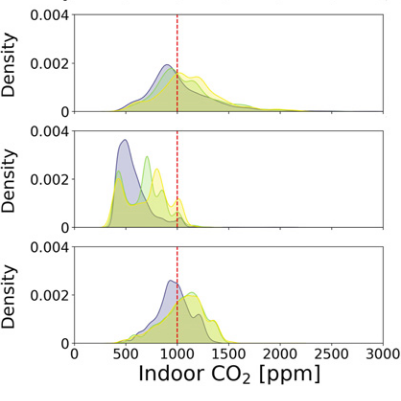 The Influence of Occupant Behaviour on Indoor Air Quality and COVID-19 Risk in Refugee Shelters and Temporary HousesAnna Conzatti, Daniel Fosas, Tristan Kershaw, and 3 more authorsBuilding Services Engineering Research & Technology, 2025
The Influence of Occupant Behaviour on Indoor Air Quality and COVID-19 Risk in Refugee Shelters and Temporary HousesAnna Conzatti, Daniel Fosas, Tristan Kershaw, and 3 more authorsBuilding Services Engineering Research & Technology, 2025There are growing concerns about poor indoor air quality in refugee shelters, particularly regarding chronic health conditions and the spread of airborne diseases like COVID-19. These issues are influenced by shelter design and occupants’ behaviours, such as cooking and window usage. However, behavioural aspects are often overlooked in shelter design due to the challenges of monitoring occupants, which can be costly and intrusive. To address this, we developed a cost-effective method for assessing shelters that combines self-assessed behavioural data, predicted ventilation rates, and a mathematical model for airborne disease transmission. This approach was tested in temporary housing following the 2020 floods in Kumamoto Prefecture, Japan. Results indicated that indoor CO2 levels exceeded national thresholds over 70% of the time, suggesting inadequate ventilation to mitigate airborne disease transmission. We estimated a 60–80% risk of COVID-19 transmission under these conditions. Our findings highlight severe health inequalities in forcibly displaced populations and provide: (i) the first comprehensive guide to monitoring indoor conditions and behaviours in these settings; (ii) a new model for assessing airborne disease risk. While the study focuses on COVID-19, the results can be extended to other airborne respiratory diseases through our reproductive number (R0) estimates.
@article{conzatti2025influence_ob, title = {The Influence of Occupant Behaviour on Indoor Air Quality and {{COVID-19}} Risk in Refugee Shelters and Temporary Houses}, author = {Conzatti, Anna and Fosas, Daniel and Kershaw, Tristan and Nakaya, Takashi and Coley, David and Rijal, Hom Bahadur}, year = {2025}, journal = {Building Services Engineering Research & Technology}, doi = {10.1177/01436244251340358}, url = {https://journals.sagepub.com/doi/10.1177/01436244251340358}, } -
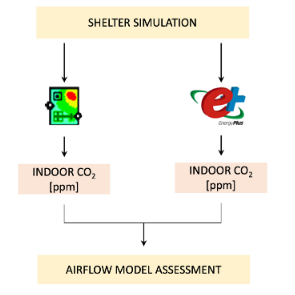 Are simple models for natural ventilation suitable for shelter design?Anna Conzatti, Daniel Fosas, Ben Chater, and 1 more authorBuildings & Cities, 2025
Are simple models for natural ventilation suitable for shelter design?Anna Conzatti, Daniel Fosas, Ben Chater, and 1 more authorBuildings & Cities, 2025Many competing airflow models are available to aid designers size windows for natural ventilation, but their complexity in terms of computation and the required expertise needed has limited their application in shelter design. Shelters house over 8 million people worldwide, and the prevalent inadequacy of indoor air quality exacerbates health risks. This study examines the use of simplified airflow models to guide the shelter design process to deliver adequate natural ventilation schemes and window dimensions. The classic Warren equations for natural ventilation are compared with airflow network models in Contam and EnergyPlus to contrast design outcomes from a practical perspective. Five natural ventilation mechanisms are tested across a representative single-zone shelter, based on those at Hitsats refugee camp (northern Ethiopia), using indoor CO2 concentrations as the key performance indicator. Results for opening sizes and ventilation layouts derived from Warren are in close agreement with those from airflow network models in Contam and EnergyPlus. Wind-driven scenarios feature the same window size for 99% of the time, while buoyancy-driven scenarios are for 94–97% of the time. These results prove that simplified modelling approaches would lead to the same design decisions as more complex models, making them as suitable and as reliable for the design of single-zone shelters.
@article{conzatti2025nv_simple, title = {Are simple models for natural ventilation suitable for shelter design?}, author = {Conzatti, Anna and Fosas, Daniel and Chater, Ben and Coley, David}, year = {2025}, journal = {Buildings \& Cities}, volume = {6}, pages = {158--181}, issn = {26326655}, doi = {10.5334/bc.497}, url = {https://journal-buildingscities.org/articles/10.5334/bc.497}, } -
 Decarbonising non-domestic buildings at scale - A systematic reviewDaniel Fosas, Ozgur Gocer, Arianna Brambilla, and 3 more authorsEnergy and Buildings, 2025
Decarbonising non-domestic buildings at scale - A systematic reviewDaniel Fosas, Ozgur Gocer, Arianna Brambilla, and 3 more authorsEnergy and Buildings, 2025The imperative for decarbonization demands the swift realization of net-zero buildings by 2050. Significant efforts have been directed at new buildings but, looking ahead, there is a need to shift towards whole-life management given buildings’ extensive lifetimes. With this objective in mind, this paper delves into scalable strategies for decarbonizing building stocks by conducting a systematic literature review concentrated on the in-use life cycle stage of buildings. Its scope is non-domestic building portfolios, a complex, under-researched stock that features dedicated teams overseeing their maintenance and operation - a management approach ideally placed to address sustainability challenges. Recent literature is analysed according to assessment of building portfolios, intervention types, and rollout mechanisms. This is then complemented with non-academic literature and governmental initiatives worldwide. Findings highlight challenges in understanding the performance of buildings in sufficient detail to inform effective retrofit planning and financing interventions. Fabric-first approaches, while desirable for their multiple benefits beyond reduced environmental impacts, do not necessarily arise as the most economically competitive measures. In contrast, just understanding and optimising energy use is reported to deliver 20% energy savings cost-effectively. Overall, findings highlight challenges and opportunities associated with proactive management of buildings alongside areas for future research.
@article{fosas2025decarbonising, title = {Decarbonising non-domestic buildings at scale - A systematic review}, author = {Fosas, Daniel and Gocer, Ozgur and Brambilla, Arianna and Globa, Anastasia and Yildirim, Muhammed and Friedrich, Daniel}, year = {2025}, journal = {Energy and Buildings}, volume = {}, pages = {}, issn = {}, doi = {10.1016/j.enbuild.2025.115587}, url = {https://www.sciencedirect.com/science/article/pii/S0378778825003172}, } -
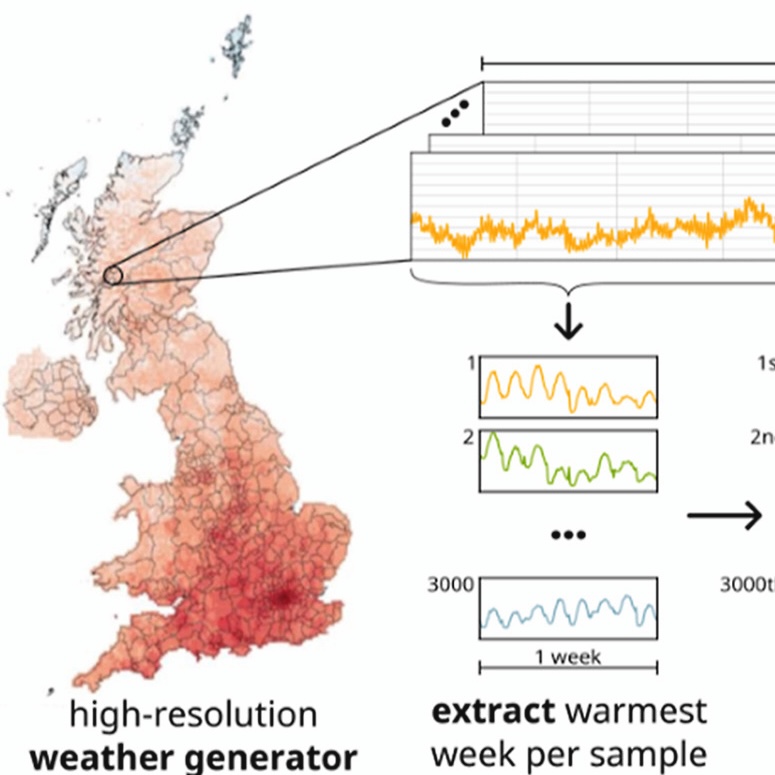 The Week That Will Be: Communicating the Impact of Climate Change via Extreme WeeksDavid A. Coley, Chunde Liu, and Daniel FosasBuilding and Environment, 2023
The Week That Will Be: Communicating the Impact of Climate Change via Extreme WeeksDavid A. Coley, Chunde Liu, and Daniel FosasBuilding and Environment, 2023As events like the 2003 European heatwave showed (where 14,000 people died in Paris alone), it is in the extremes of weather, not the mean climate, where much climate change risk lies. Communication with the public, or the testing of natural and human-made environments via simulation, has focused however on the mean situation. To many, a future 2 or even 4 °C rise in mean temperature will seem modest and hence fail to convey the scale of the issue, thereby creating a gap between reality and expectation. Here we use the idea of presenting an audience with a week-long time series of future local extreme weather as a way of bridging this gap. A week has both vernacular currency and covers the length of many heatwaves. We generate UK future weeks in 2030, 2050 and 2080 at a 5 km interval, thereby allowing interested parties to visualise for the first time likely future heatwaves in their locality. Future heatwaves of similar form as the 2003 Paris event are found, but with even higher temperatures, suggesting the likelihood of largescale mortality. We apply the approach to the conditions within a UK home under future heatwaves with return periods of 10–50 years. Conditions far beyond adaptive comfort limits are found. Weather files containing the extreme weeks for 11,326 locations have been prepared and are made available. These will be of use to those trying to explain the likely impacts of climate change, governments setting resilience policy and those using computer modelling.
@article{coley2023week_that_will_be, title = {The Week That Will Be: Communicating the Impact of Climate Change via Extreme Weeks}, author = {Coley, David A. and Liu, Chunde and Fosas, Daniel}, year = {2023}, journal = {Building and Environment}, volume = {227}, pages = {109809}, issn = {0360-1323}, doi = {10.1016/j.buildenv.2022.109809}, url = {https://www.sciencedirect.com/science/article/pii/S0360132322010393}, } -
 Towards Active Buildings: rating grid-servicing buildingsDaniel Fosas, Elli Nikolaidou, Matthew Roberts, and 3 more authorsBuilding Services Engineering Research and Technology, 2021
Towards Active Buildings: rating grid-servicing buildingsDaniel Fosas, Elli Nikolaidou, Matthew Roberts, and 3 more authorsBuilding Services Engineering Research and Technology, 2021CIBSE Dufton Medal for Research in 2022.
In most industrialized countries, the buildings sector is the largest contributor to energy consumption and associated carbon emissions. These emissions can be reduced by a combination of energy efficiency and the use of building integrated renewables. Additionally, either singularly or as a group, buildings can provide energy network services by timing their use and production of energy. Such grid-aware or grid-responsive buildings have been termed Active Buildings. The recent UK Government investment of £36m in the Active Building Centre is a demonstration that such buildings are of considerable interest. One problem with the concept, however, is that there is no clear definition of Active Buildings, nor a building code to design or research against. Here we develop and test an initial novel code, called ABCode1. It is based on the need to encourage: (i) the minimisation of energy consumption; (ii) building-integrated generation; (iii) the provision of grid services; and (iv) the minimisation of embodied carbon. For grid services, we find that a lack of a precise, quantifiable measure, or definition, of such services means that for the time being, theoretical hours of autonomy of the building is the most reasonable proxy for these services within such a code.
@article{fosas2020abcsota, title = {Towards Active Buildings: rating grid-servicing buildings}, journal = {Building Services Engineering Research and Technology}, volume = {42}, pages = {129--155}, author = {Fosas, Daniel and Nikolaidou, Elli and Roberts, Matthew and Allen, Stephen and Walker, Ian and Coley, David A.}, year = {2021}, } -
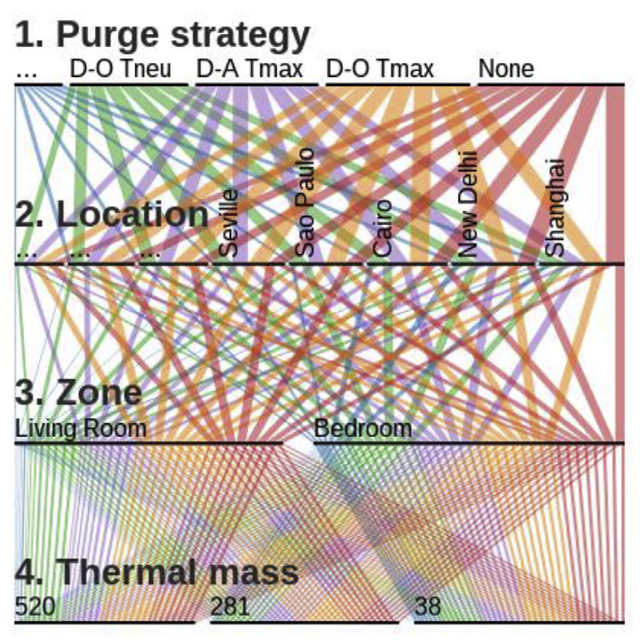 Mitigation versus Adaptation: Does Insulating Dwellings Increase Overheating Risk?Daniel Fosas, David A. Coley, Sukumar Natarajan, and 3 more authorsBuilding and Environment, 2018
Mitigation versus Adaptation: Does Insulating Dwellings Increase Overheating Risk?Daniel Fosas, David A. Coley, Sukumar Natarajan, and 3 more authorsBuilding and Environment, 2018Given climate change predictions of a warmer world, there is growing concern that insulation-led improvements in building fabric aimed at reducing carbon emissions will exacerbate overheating. If true, this would seriously affect building regulations all over the world which have moved towards increased insulation regimes. Despite extensive research, the literature has failed to resolve the controversy of insulation performance, primarily due to varied scope and limited comparability of results. We approach this problem through carefully constructed pairwise comparisons designed to isolate the effect of insulation on overheating. We encompass the complete range of relevant variables: latitude, climate, insulation, thermal mass, glazing ratio, shading, occupancy, infiltration, ventilation, orientation, and thermal comfort models — creating 576,000 building variants. Data mining techniques are implemented in a novel framework to analyse this large dataset. To provide confidence, the modelling was validated against data collected from well-insulated dwellings. Our results demonstrate that all parameters have a significant impact on overheating risk. Although insulation is seen to both decrease and increase overheating, depending on the influence of other parameters, parameter ranking shows that insulation only accounts for up to 5% of overall overheating response. Indeed, in cases that are not already overheating through poor design, there is a strong overall tendency for increased insulation to reduce overheating. These results suggest that, in cases with acceptable overheating levels (below 3.7%), the use of improved insulation levels as part of a national climate change mitigation policy is not only sensible, but also helps deliver better indoor thermal environments.
@article{fosas2018mitigation, title = {Mitigation versus Adaptation: Does Insulating Dwellings Increase Overheating Risk?}, volume = {143}, journal = {Building and Environment}, year = {2018}, pages = {740--759}, author = {Fosas, Daniel and Coley, David A. and Natarajan, Sukumar and Herrera, Manuel and Fosas-de-Pando, Miguel Angel and Ramallo-Gonzalez, Alfonso}, } -
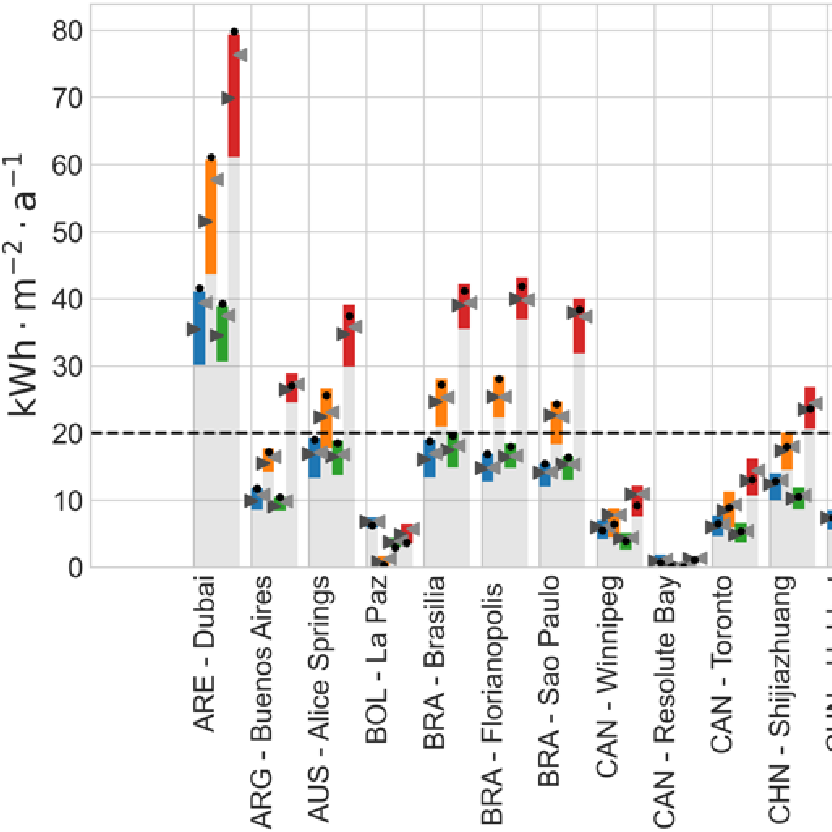 Bounding long-term building energy performance with single-year extreme weather filesDrury Crawley, Daniel Fosas, and Linda LawrieIn Proceedings of the 19th IBPSA Conference, Brisbane, Australia, Aug 24-27, 2025, Brisbane, 2025
Bounding long-term building energy performance with single-year extreme weather filesDrury Crawley, Daniel Fosas, and Linda LawrieIn Proceedings of the 19th IBPSA Conference, Brisbane, Australia, Aug 24-27, 2025, Brisbane, 2025The representation of typical weather conditions is well understood, but the resilient design and operation of buildings is influenced by extremes. Here, we advance the proposal of eXtreme Meteorological Years (XMYs), first introduced by Crawley & Lawrie in 2015, bounding the peak building energy performance for space heating and cooling with a single, composite year. Past XMYs formulations have been shown to work for several climates, but not all, and this work seeks to address this while improving XMYs performance. The novel quantile approach based on degree days shows that XMYs can bound energy performance within ±5 kWh·m²·a⁻¹. These results demonstrate XMYs can reliably bound performance to a degree compatible with decision-making for building design and operations.
@inproceedings{crawley2025xmy, title = {Bounding long-term building energy performance with single-year extreme weather files}, author = {Crawley, Drury and Fosas, Daniel and Lawrie, Linda}, eventtitle = {19th IBPSA Conference Brisbane, Australia, Aug 24-27, 2025}, booktitle = {Proceedings of the 19th IBPSA Conference, Brisbane, Australia, Aug 24-27, 2025}, location = {Brisbane}, year = {2025}, }